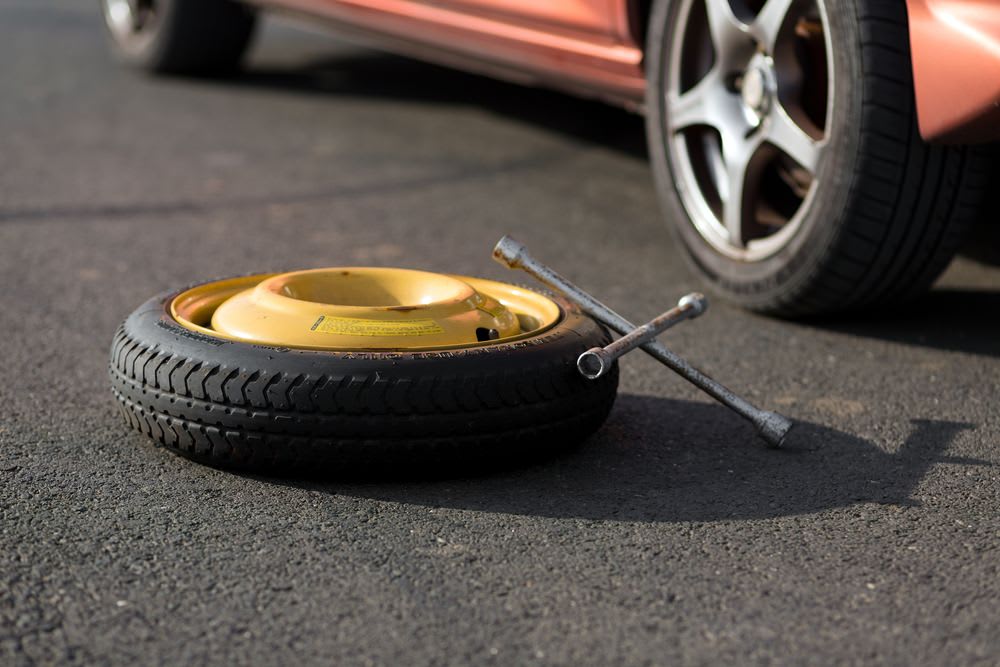

A spare tire is solely meant for use in an emergency, or as a short term replacement for a flat or damaged tire. It is not meant for everyday or extended use, and tire manufacturers have specific criteria for their usage.
Compact spare tires, also known as donuts, are thin tires with with a space-saving design. Because there is such a small amount of inflated rubber to cushion the vehicle over bumps and there is so little tread, they are meant for extremely limited use. Basically, if the spare tire has been installed, it is meant to be replaced as soon as possible.
Compact spare tires:
Are meant for use at speeds no higher than 50 mph.
Are to be used for a cumulative distance of no more than 50 miles.
Are not for use with all-wheel drive vehicles, nor for vehicles with four-wheel drive engaged.
Full-sized spare tires:
Should not be used longer than necessary due to mismatching speed ratings and load ranges.
Should be replaced when the tread is worn or the tire is ten years of age or older according to the sidewall date.
Full-sized spare tires used to be much more commonplace than they are now due to their versatility. In many cases, the spare tire could be installed on the vehicle and simply rotated into use. Slowly they made way for compact spare tire usage, which took up much less cargo space. If your vehicle has a full-sized spare, it is likely designated as a spare tire and not a passenger-use tire. It should not be used as a long-term replacement for a flat or damaged tire on your vehicle.
If you’ve experienced a flat tire and have used your spare tire, check with the specifications on the sidewall to determine if it needs to be replaced or can be stowed again for future use. Consult the manufacture date on the sidewall to determine if the tire is over 10 years old. If it is, have it replaced, regardless of condition, for your safety.



